|
The city of Troy’s position on the Hudson River was essential to its growth as one of the 19th century’s most prosperous American cities. “Location, location, location,” is a real estate rule of thumb for a good reason. Troy is uniquely positioned to take advantage of the joining of the Hudson and Mohawk Rivers on its northern border, and the confluences of the Poestenkill and Wynantskill Creeks in South Troy. The Mohawk and Hudson are both part of the Erie and Champlain Canal system which allowed goods and commodities to flow between the Great Lakes, the Midwest, Canada and New York City, while the water power of the creeks made Troy’s large iron and steel industry possible. Troy’s position along the Hudson also empowered the textile, collar and cuff industry which gave the city the nickname “the Collar City.” So what kind of businesses were along River Street? What were their products or services? When were they built? Who were the owners, and what kinds of changes happened to the businesses, the buildings, and the city over the decades? That’s the topic of the next few blog posts. For the first post on this topic, please check this blog's previous post. 155 River Street This is one of the youngest buildings on this part of River Street, but one of my favorites, architecturally speaking. It’s also not the first building on this advantageous spot near the shoreline. Before this impressive warehouse was built in 1888, the site was occupied by the Pawling & Ten Eyck warehouse, built in 1787. It was one of the River Street buildings that survived the fire of 1820. According to 19th century Troy historian Arthur James Weise, who penned Troy’s One-Hundred Years in 1889, this early building was a local landmark, used by the general public and in print advertisements as a directional marker for other buildings in the neighborhood before Troy’s buildings were numbered. By the 1840s, 155 River was home to one of many successful shipping companies. Before the Civil War, there were many such companies with offices here on River, including those located at 153, 191, 205 and 339 River Streets. 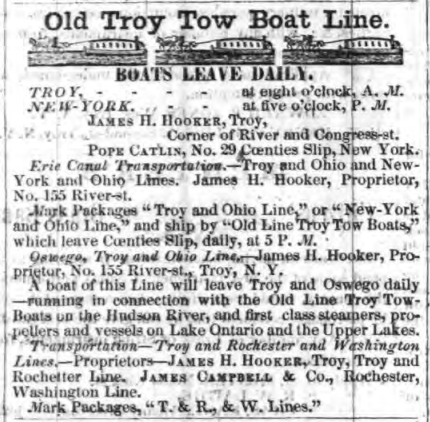 1851 ad. Troy Daily Whig 1851 ad. Troy Daily Whig This location, advantageously on the corner and easily accessible by street or river, was home to the Troy Tow Boat Company and other shipping companies owned by James H. Hooker and a series of business partners in New York City, Albany and Montreal. The Troy Tow Boat Company was in business from at least 1838, when ads begin to appear in the Troy papers, and was formally dissolved in 1847, as posted in a legal announcement in the paper. James Hooker and his NYC partner Pope Caitlin kept the business going with new names. Tow boats have long been a mainstay of canal and river traffic. Barges loaded with goods were not self-powering, they needed towboat steam power to get them up and down the Hudson. In the Erie Canal’s early days, barges were towed down the canal by horses, mules or oxen, from a parallel pathway, but when they cleared the last lock and were on the Hudson, they needed a tow boat. Troy’s tow boat companies were lucrative businesses. In addition to providing the boats, many tow companies, such as Troy Tow Boat also offered warehouse storage space. This ad from the 1840 Troy Daily Whig shows how advantageous it was for a merchant to store and sell fine flour from Rochester, stored here at 155 River Street. James Hooker died in 1854. One of his old business partners appears to have bought the business and carried on from there, on past the Civil War years. A New Building for a New Era The original building was destroyed by fire in 1867, and the lot remained empty until it was replaced by today’s larger warehouse, built in 1888. This handsome six story Romanesque Revival-style brick building with rows of arched windows and fine cast iron numbering was built for Charles A. Brown & Company as a showroom and warehouse for his knit goods, undershirts and under drawers. Charles Brown was president of the Rob Roy Hosiery Company, which manufactured knit goods in a nearby factory at 191 1st Street. He also represented the knit underwear lines of Aetna Hosiery Mills, which had a factory in North Troy. The office and showroom for the business was on the ground floor, with plenty of storage and shipping space above. Ads from 1904 show a new name in the building, but the same product being sold. As the 20th century progressed, most of Troy’s textile mills began to close and move down south. Only the giants, such as Cluett Peabody remained. It’s unclear when this building ceased being a knit goods warehouse, but by 1931, it was a garage. The Troy Times announced in April of that year that Edward C. Buchanan, one of the oldest transport and taxi men in Troy was opening his new garage in 155 River Street. His business would offer auto storage by the month or year, as well as daily and other parking. His delivery and taxi service, which used the drivers’ own vehicles, would also operate from this location. At some point in this building’s history, in the mid-20th century, the original storefront façade was changed and “modernized” as can be seen in this photo of the old Congress Street Bridge. River Street continued beyond, long before the THA houses were built, and before River Street was re-routed in the 1960s. Most recently, this great building was the long-time home of the New York State Theater Institute, which offered a full theater arts curriculum with performances in their loft space, as well as outreach programs to local schools. When they left, the building remained empty. It was purchased recently by the River King Development Company, which has recently filed plans for mixed-use retail and residential use. It will be good to see one of Troy’s most beautiful industrial buildings brought back to life. And I would love a top floor loft, please. Next Time: Another storied River Street building or two….
5 Comments
Annee Borthwick
12/14/2016 09:19:09 am
Look for the "fire escapes" on the south wall ( seen in the 1950s photo): Step out the window and put your feet on the iron pipe rail below the lintel, Swing under the iron pipe handrail so you turn facing the bricks, now... Move left or right to the fire escape ladder = individual iron pipe ladder rungs cemented into the brick. Go down. Pipe gets hot or is frozen cold or is wet from fire hoses. Women's skirts tangle and wad and get stepped on, Few remain calm.
Reply
Ellen S Adler
1/28/2018 03:48:58 pm
I would like a penthouse as well.
Reply
Dennis Curley
1/4/2022 01:39:58 pm
I think I remember an auto parts store there in the '60s - '70s. A Troy city directory, if still published, would confirm and possibly reveal the owner or franchise.
Reply
Anthony Rivieccio
5/16/2022 04:23:44 pm
! Nice content here
Reply
Leave a Reply. |
AuthorMy name is Suzanne Spellen. I've been many things: a writer, historian, preservationist, musician, traveler, designer, sewer, teacher, and tour guide; a long time Brooklynite and now, a proud resident of Troy, NY. Archives
February 2019
Categories
|
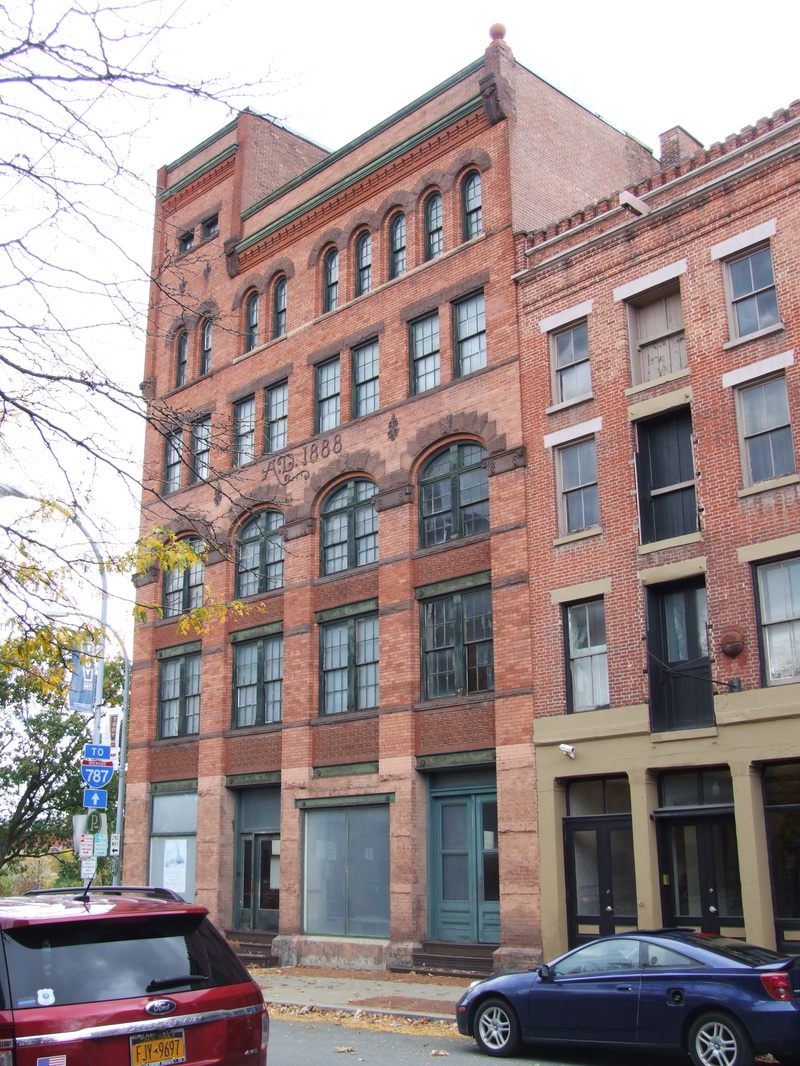
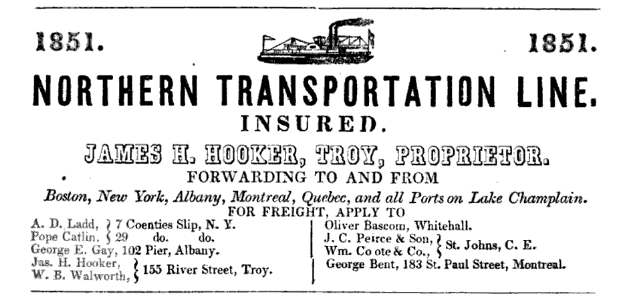
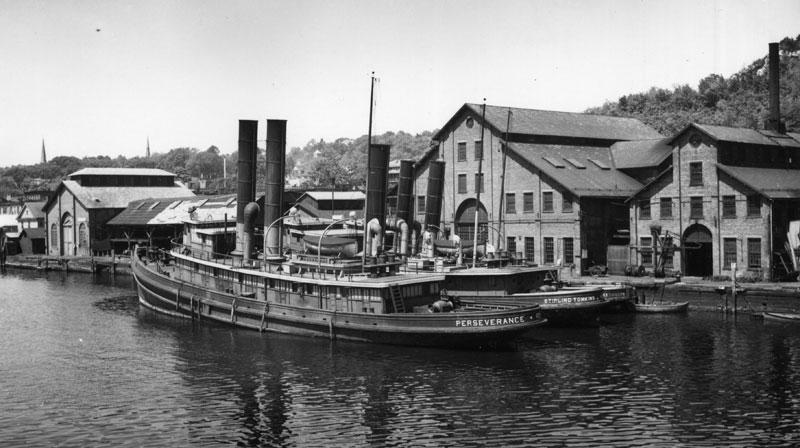

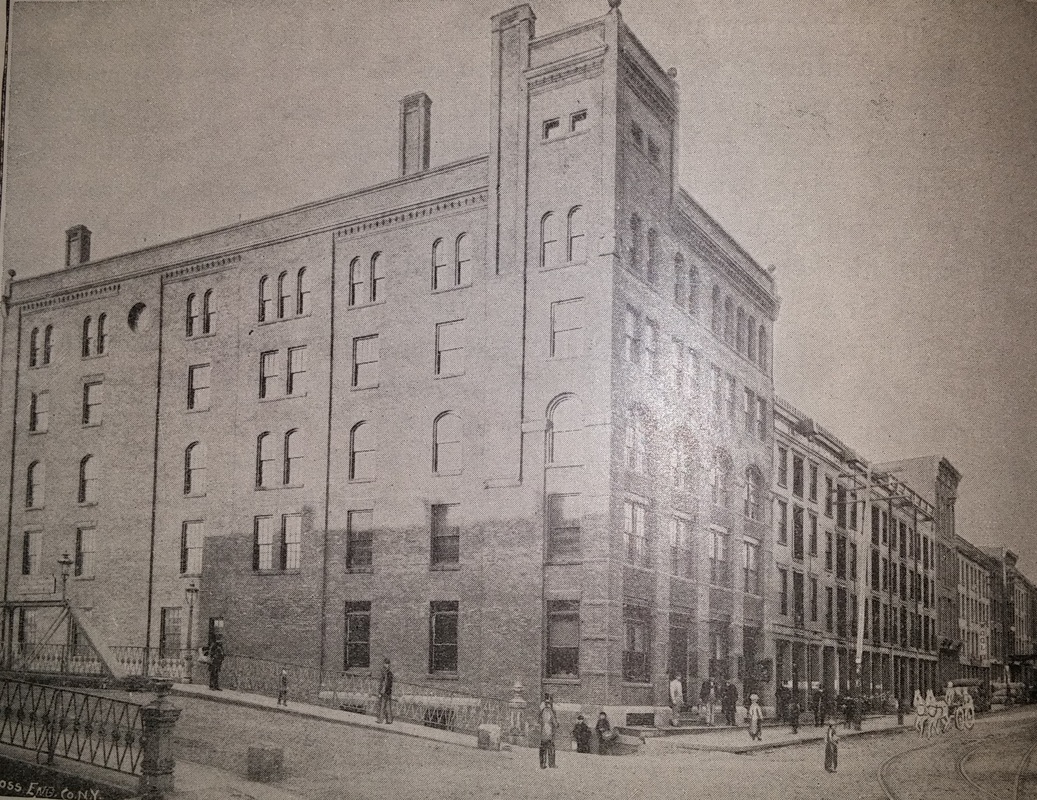
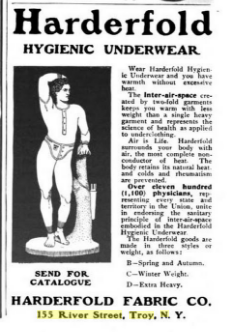
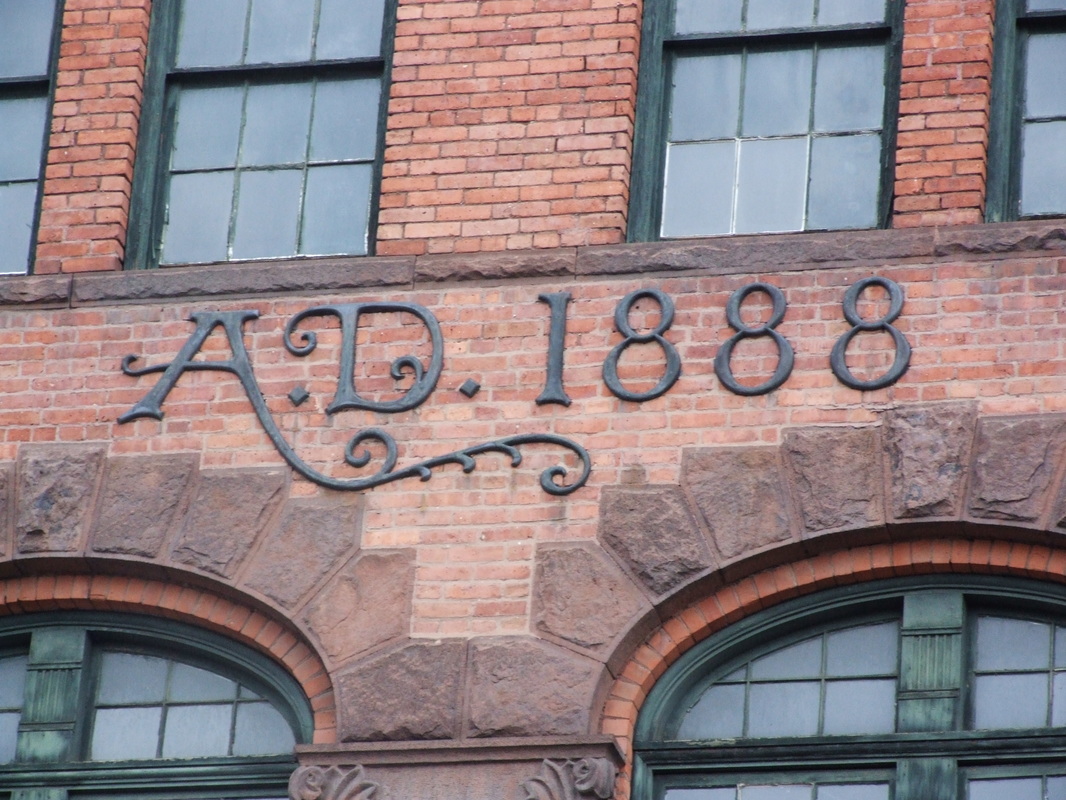
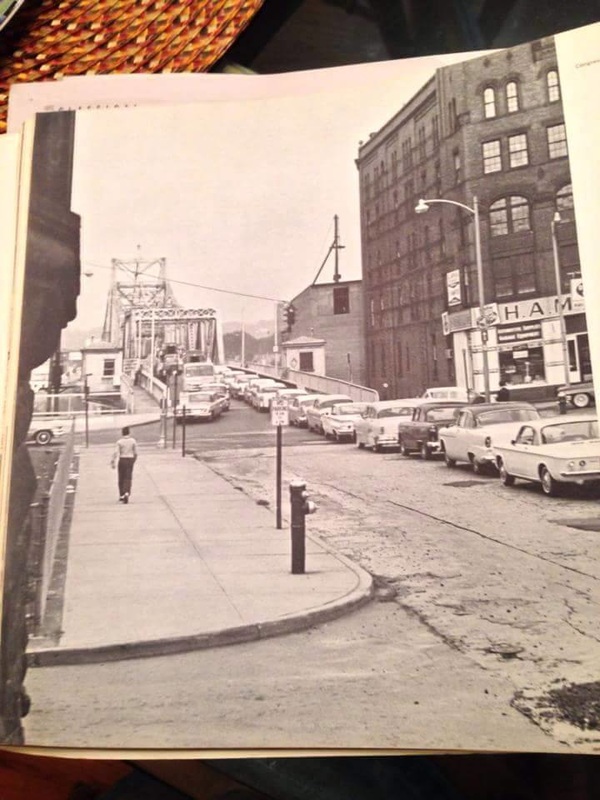
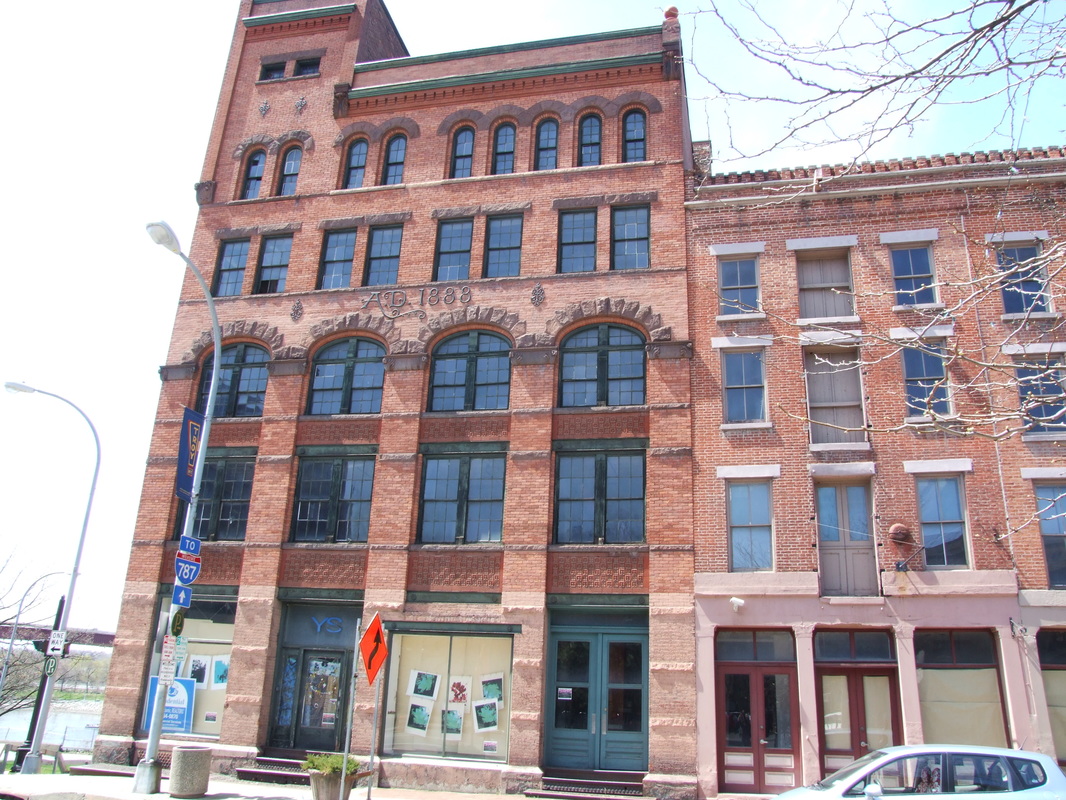
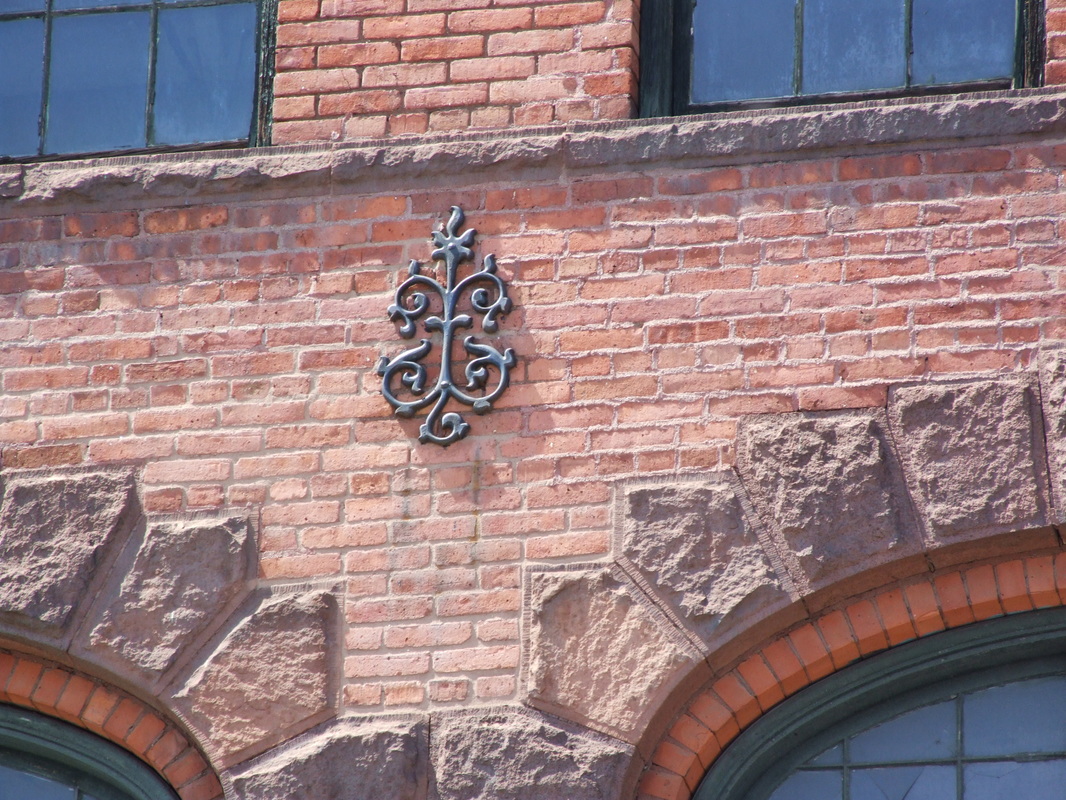
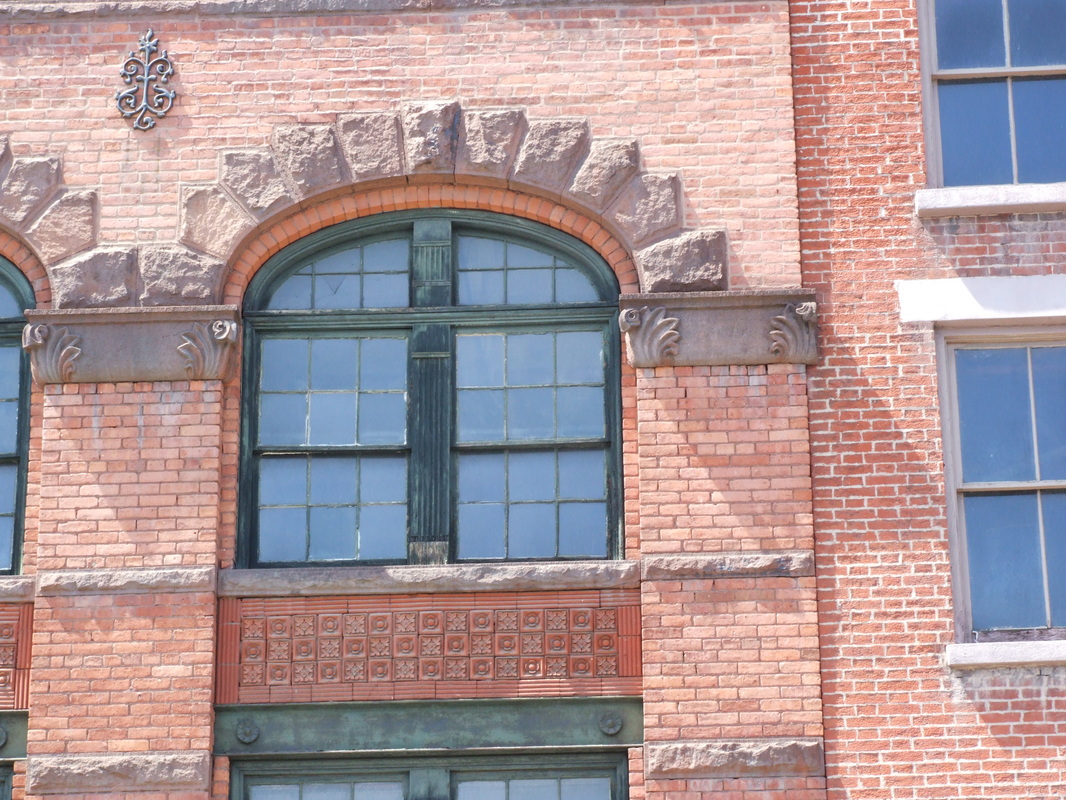
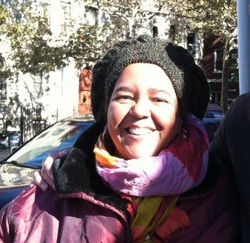
 RSS Feed
RSS Feed
